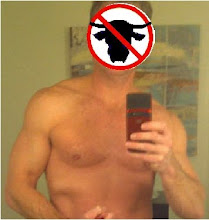UPDATE: Who are some of the people that believe Trump's six month's of "836 false or misleading claims. That’s an average of 4.6 claims a day, not far off his first 100-day pace"?
You'll find them watching "a match race between Michael Phelps and a great white shark" in open water.
Read The New York Times, Michael Phelps ‘Raced’ a ‘Shark,’ Kind Of. Not Really.
Read also the Washington Post, President Trump’s first six months: The fact-check tally.
"About a quarter of Americans strongly approve of Trump’s job performance. A quarter think he’s doing a better job than past presidents. A quarter think America’s position in the world has gotten stronger since he was inaugurated. A quarter think that the way he acts is presidential. A quarter thought it was appropriate for his son, son-in-law and campaign chairman to meet with a Russian lawyer offering negative information on Hillary Clinton.
That is the Trump bubble.
One might be inclined to suggest that it’s everyone else who constitutes the bubble. Such a person is welcome to make that case, certainly, but there are two reasons that the term doesn’t apply as readily to the yellow slices of the pie. For one thing, they vary more in size and constitution. For another, they are the majority. Perhaps you, the rest of the world, are in the bubble that naively doesn’t think that the New York Mets are the best team in baseball (or who couldn’t care less). Or perhaps it’s Mets fans.
We saw something similar during the campaign. No matter what Trump did, his core base of support stuck with him. Some part or all of that core base of support sticks with him still. While most Americans disapprove of Trump’s job performance, see him as unpresidential and think he’s performing worse than past presidents, this quarter of the public disagrees.
There’s one good reason for that: Trump’s messaging and priorities all seem to target that group. That’s the bubble: Trump’s tweets about the biased media and inaccurate polls may not reflect reality, but they reinforce a message that bounces around within that base. Trump’s policy priorities may not be shared by most Americans, but they are shared by that core base of support. . .
Why the split? In part, certainly, thanks to [a media] divide . . . There are different media environments that cater to those inside and outside that space. If you support Trump and believe that he’s being effective, you can immerse yourself in a world where voices critical of that belief are sidelined or muted. And if you dislike Trump and think he’s failing, you can do the same.
It’s hard to predict what the result of this divide will be on American politics. One interesting side effect is already obvious: Republicans on Capitol Hill are reticent to criticize Trump, in part because his bubble of support overlaps with their primary election voters. It seems to bode poorly for Trump in 2020, except that he still has 3½ years to turn it around — and except that having only a kernel of fervent support didn’t keep him from winning in 2016.
For now, though, the effect is clear. There is a group of Americans who seem distinctly unlikely to ever change their minds about how Trump is doing. And Trump has dived deep into that pool, and is swimming in it gleefully."
Read the Washington Post, Trump and his base live in a bubble where he’s popular and all is well.

No comments:
Post a Comment